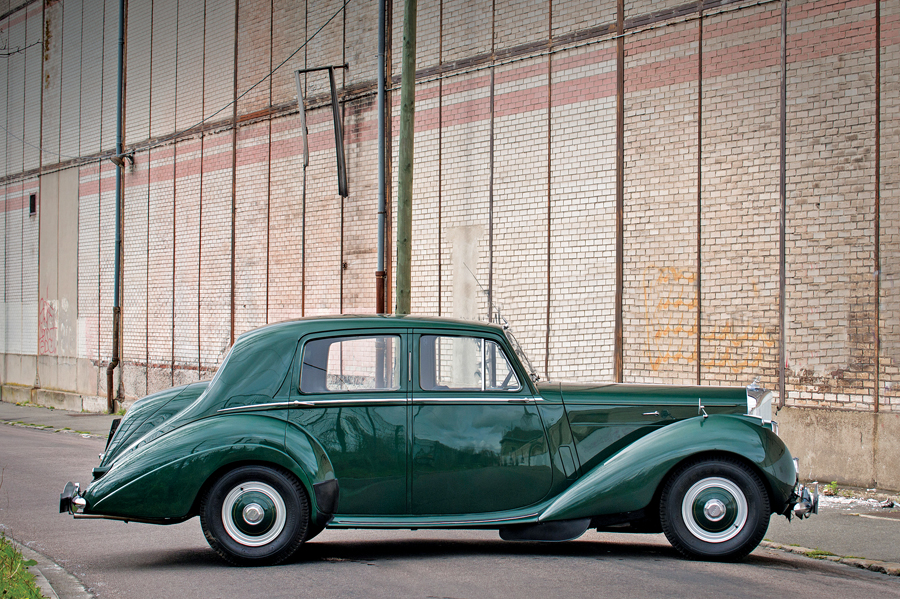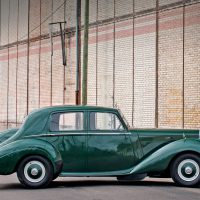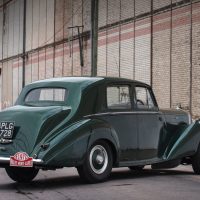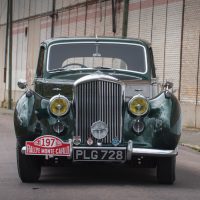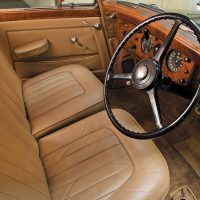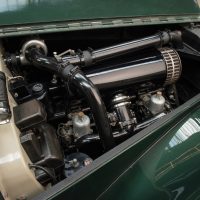SCM Analysis
Detailing
| Vehicle: | 1952 Bentley R-type Saloon |
| Years Produced: | 1952–55 |
| Number Produced: | 2,486 |
| SCM Valuation: | Median to date, $29,000; high sale, $59,824 |
| Tune Up Cost: | $800 (oil and filter change, valve clearances, plugs, ignition timing) |
| Chassis Number Location: | Plate on left side of firewall |
| Engine Number Location: | Left side of cylinder block |
| Club Info: | Bentley Drivers Club |
| Website: | http://www.bdcl.org |
| Alternatives: | 1946–52 Bentley Mk VI, 1952–55 Rolls-Royce Silver Dawn, 1946–53 Talbot-Lago Record T26 |
| Investment Grade: | C |
This car, Lot 239, sold for $53,896, including buyer’s premium, at RM Sotheby’s Monaco sale on May 14, 2016.
This car comes from a bygone era of rallying, when men were men — and the women were too.
“Rallying” means something different in every culture, from a gentle treasure hunt to these almost-round-the-clock endurance runs that were designed to exhaust the crews so they made mistakes in navigation and timing. Sometimes they made more serious mistakes, such as running off the road into a ravine.
I know this, having tasted the same on the Monte Carlo Challenge almost 20 years ago. It was an historic rally designed to replicate the good old days, where routes to Monaco from various start points in Europe appeared to take us over every Alp and goat track in southern France. That was in a bog-standard Austin A35 complete with a steel sun visor that must have cost us 10 mph.
It was hard work — although the human brain has a remarkable capacity to forget, and later the same year we did Le Jog in the same car. Le Jog was an even more exhausting event in those days, as it was almost non-stop over two and a half days from Land’s End to John O’Groats. I really did start hallucinating on that one. But I digress.
Plush power for rallying
After roughing it with little comfort and only 948 cc, one can see the point in attempting these events with a little more luxury and power.
Rally preparation didn’t amount to much back then. Roll cages were unheard of. An extra spotlight perhaps, maybe a more accurate trip meter, rarely seat belts — and, if you were really daring, you might remove the hubcaps, but they’d need to go back on for the Concours de Confort, which was effectively the final test on the Monte.
Both of the latter were a big incentive not to bend the car on the way to the finish in the principality, which really was glittering in those days — as opposed to the grimy, traffic-choked building site it is now.
Special kit for the arduous rally
Mike Couper, loyal to the marque as ever, had chosen a good starting point with the Bentley. The R-type is essentially a Mk VI with double the trunk space. Both of those cars are short(er)-wheelbase derivatives of the Rolls-Royce Silver Wraith and Silver Dawn.
The R-type would be developed into the swoopy Continental version — still lauded today as a magic-carpet ground coverer — but even the upright saloons aren’t too shabby, with plenty of torque from the 4.6-liter straight-six (power is probably around 150 bhp), a sweet gearbox and good brakes — which are probably the next important factor when traversing the Alpes-Maritimes. On the R-type they are hydraulic on the front, rod-operated at the back.
Couper’s factory-installed “performance cylinder head” was similar to the Continental’s, but for all we know it might have had lower compression due to the superior attitude of Brits, who at the time tended to distrust any “foreign muck” — including the petrol.
Either way, the car got there, starting from Glasgow and traveling via Wales, Belgium and The Netherlands (take a look at the map…) and wending its way south. The catalog does say that the trip included “time to rest at fine hotels and for meals at some of Europe’s finest restaurants.” Perhaps things weren’t as arduous in 1953 as they became later.
Only trouble was, a timing mistake on the Col de Braus test dropped the car to 45th place. But the Concours de Confort was awarded for having the best-detailed car at the conclusion of the rally. In addition, a special Coupe d’Or honored Couper’s contribution to the event over the years.
That appeared to be the end of the Bentley’s competition career, and it stayed in Europe until 1968, when it went to the United States.
A well-preserved bit of history
The car looks to have never undergone a major restoration. It was repainted in a metallic version of its original color, although it has obviously had various titivation works over its life. It is complete with a full set of tools, as well as a tire pump, jack, oilers, and the owner’s handbook.
The aircraft-style webbing seat belts were a nice touch, and advanced for 1953. The headlight washers fitted for the event are long gone, as is the little Perspex deflector screen behind the Flying B radiator mascot.
The car’s journey to Monte Carlo is well documented (they even had time for photographs) in Mike Couper’s book, Rallying to Monte Carlo.
This car sold for a little less than the last R-type I drove. In 2015, that other car was retailing at £42,500 (then about $65,000) — and our subject car was as nice or even slightly nicer.
For its condition, and with its history, I’d say this car was very well bought — although I’m not sure I’d want to earhole it down the hairpins on the current Monte Carlo historic rallies.
This car serves to remind you of an era when, in the face of adversity, chaps just clenched their pipes tighter in their teeth and simply got on with it, uncomplaining about such trifles as brake fade — and isn’t nostalgia what the old-car world is (or should be) all about? ♦
(Introductory description courtesy of RM Sotheby’s.)
